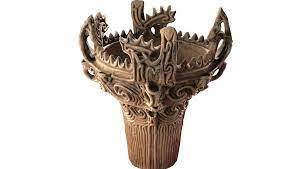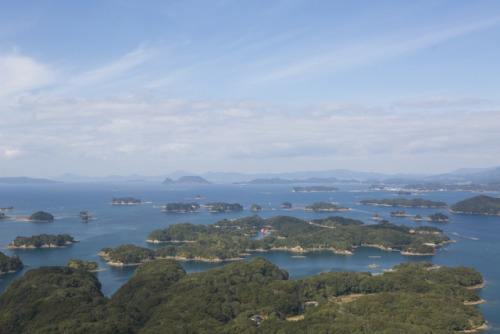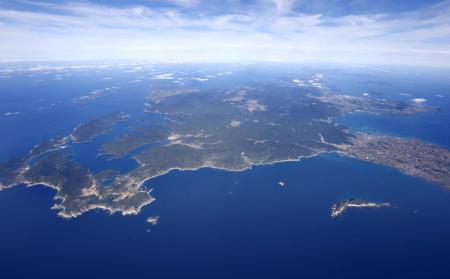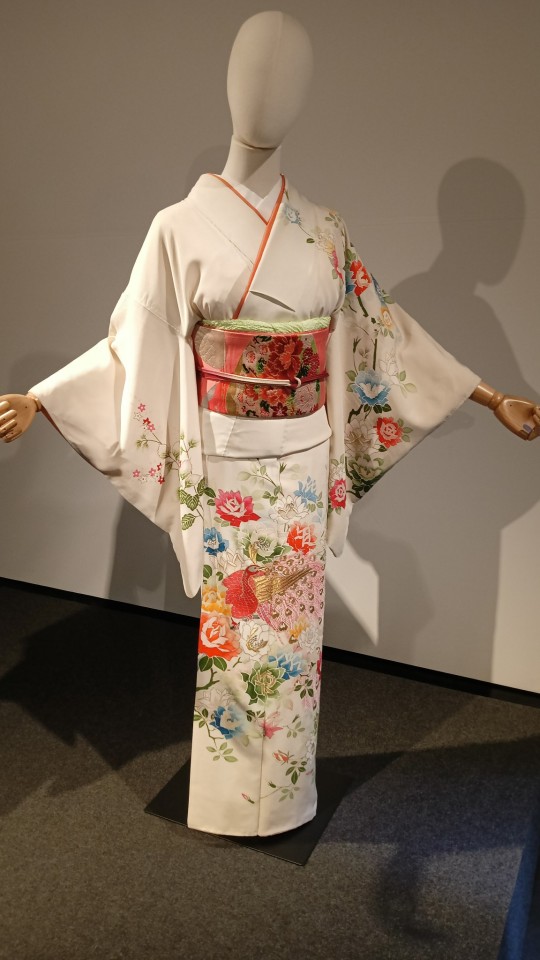考古学ジャポニストは、長野県のさまざまな古墳を見ることができる一連の日本の原史時代に歓迎されています。




考古学ジャポニストは、長野県のさまざまな古墳を見ることができる一連の日本の原史時代に歓迎されています。 古墳はすべて松本市にありますので、安心して始めましょう。 - 私が最初に紹介する墓は高望山と呼ばれていますが、どの時期に建てられたのですか? 誰が埋葬されたのですか?古墳は西暦3世紀から4世紀にまでさかのぼります。古墳の大きさは66メートルで、1974年に考古学調査が行われました。 - 彼は現在、いくつかの考古学的発掘調査の真っ最中です。ニュースを知ったら、それをお届けします。 現時点では、誰が埋葬されたかは不明です。 よろしくお願いします。次の章でお会いしましょう。 - 心からのご挨拶と、よろしければ読んでいただきありがとうございます。コメントして共有し、より多くの人が日本の小さな作品を手に入れられるようにしてください。 - Archaeological Japonists are welcome to a series of Japanese protohistory, in which we will see different burial mounds of the Nagano prefecture. All the burial mounds are located in the city of Matsumoto, with that being said, make yourself comfortable, let's begin. - The first tomb that I present to you is called Koboyama. In what period was it built? Who was buried in it? The burial mound dates back to the 3rd and 4th centuries AD. The dimensions of said burial mound are 66 meters and in the 1974 decade archaeological studies were carried out. - He is currently in the middle of some archaeological excavations, when I know any news I will bring it to you. At the moment it is not known who was buried. I hope you like it and see you in the next chapter. - Cordial greetings and thanks for reading it if you liked it, comment and share so that more people take a little piece of Japan.
More Posts from Noticiasarquelogicasjaponesas and Others




Sean bienvenidos, japonistasarqueologicos, al tercer capítulo del Japón prehistórico y seguir recorriendo sus lugares mitológicos y mágicos, una vez dicho esto póngase comandos que empezamos. - Para continuar nuestro viaje, más vale tarde que nunca, pero despacio y con buena letra. Nos trasladamos al yacimiento arqueológico de Sannai Maruyama en la prefectura de Aomori, localizada en la región de Tōhoku. - La estructura, de madera, data del periodo jomon, es una estructura que funcionó como un gran calendario, ya que algo común que tienen todas las culturas en el mundo es adorar a las estrellas en lo que respecta a la prehistoria. El yacimiento data del 3900 a.c localizado a lo largo del río Okidate en la punta de una suave colina que se extiende desde las montañas Hakkoda. - En la década de 1992, tuvieron lugar las excavaciones que han desenterrado los restos de viviendas en pozos, tumbas de adultos, niños y los pozos de almacenamiento, entre otros rastros de la vida cotidiana. Además de una hay una gran cantidad de herramientas de loza de piedra. Se han excavado una gran variedad de huesos de pescado y de animales que indican hábitos alimenticios de aquella gente, también fueron encontrados frutos secos: como castañas y nueces. Además, se han desenterrado muchas reliquias orgánicas, como productos de madera, herramientas de hueso, canastas tejidas, así como artículos comerciales como jade, obsidiana de áreas remotas y asfalto. Hay una teoría: en Iwate se crean estructuras similares para realizar la danza de los ciervos ¿Qué opinan al respecto? _ Espero que os haya gustado y nos vemos en próximas publicaciones mis amantes del mundo japonés, que pasen una buena semana. - 考古学者の日本主義者の皆さん、先史時代の日本の第 3 章へようこそ、神話と魔法の場所を旅し続けてください。 - 旅を続けるには、遅刻しないよりはマシですが、ゆっくりと上手な字で。 東北地方にある青森県の三内丸山遺跡へ移動します。 - この木造建造物は縄文時代にまで遡り、先史時代から世界のどの文化にも共通して星を崇拝しており、偉大な暦として機能していた建造物です。 この遺跡は、八甲田山系から続くなだらかな丘陵の先端、沖館川沿いに位置し、紀元前 3900 年に遡ります。 - 1992 年代に発掘調査が行われ、井戸内の住居跡、大人、子供の墓、貯蔵穴、その他の日常生活の痕跡が発掘されました。 1 つ以外にも多数の石器の道具があります。 当時の人々の食生活を示す魚や動物の骨が多数出土しており、栗やクルミなどの木の実も出土しています。 さらに、木製品、骨道具、編んだかごなどの有機遺物や、翡翠、辺境の黒曜石、アスファルトなどの交易品も発掘されています。 岩手でも鹿踊りをするために同じような建物が作られているという説がありますが、どう思いますか? _ 日本の世界を愛する皆さん、良い一週間をお過ごしください。 - Welcome, archaeological Japanists, to the third chapter of prehistoric Japan and continue touring its mythological and magical places. Having said that, put yourself in command and let's begin. - To continue our journey, better late than never, but slowly and with good handwriting. We move to the Sannai Maruyama archaeological site in Aomori prefecture, located in the Tōhoku region. - The wooden structure dates back to the Jomon period, it is a structure that functioned as a great calendar, since something common that all cultures in the world have is worshiping the stars in regards to prehistory. The site dates back to 3900 BC located along the Okidate River at the tip of a gentle hill that extends from the Hakkoda Mountains. - In the 1992s, excavations took place that unearthed the remains of dwellings in wells, graves of adults, children and storage pits, among other traces of daily life. In addition to one there are a large number of stoneware tools. A wide variety of fish and animal bones have been excavated that indicate the eating habits of those people. Nuts such as chestnuts and walnuts were also found. In addition, many organic relics have been unearthed, such as wooden products, bone tools, woven baskets, as well as trade items such as jade, obsidian from remote areas, and asphalt. There is a theory: in Iwate similar structures are created to perform the deer dance. What do you think about it? _ I hope you liked it and see you in future posts my lovers of the Japanese world, have a good week.

Sean bienvenidos japonistaarqueológicos a una nueva entrega de arqueológica japonesa dicho esto pónganse cómodos que empezamos. En esta ocasión, nos trasladamos a las ruinas de Saigu que están localizadas en la prefectura de Mie además es un sitio histórico nacional en Meiwa-cho, en el cual vivió Saio, la princesa que sirvió a Ise Jingu en lugar del emperador. - Esto lo sabemos gracias a los restos arqueológicos se, cree que se construyó entre el período Nara tardío y el período Heian temprano, se componen de cuatro edificios. - Estén atentos ya que les iré informando de todo lo que se vaya sabiendo,¿ Conocían este lugar? Espero que os haya gustado y nos vemos el día 22 nuevamente, os deseo un cordial saludo. - 日本の考古学の新しい記事へようこそ。 今回は、伊勢神宮に仕えた皇女・斎王が住んでいた、三重県明和町にある国の史跡「斎宮跡」に移動しました。 - 考古学的遺跡のおかげで、奈良時代後期から平安時代初期に建てられたと信じられており、4つの建物で構成されています。 - わかっていることはすべてお知らせしますので、お楽しみに、このサイトをご存知でしたか? 気に入っていただけて、22日にまたお会いできることを願っています。 - Welcome japonistasarqueológicos to a new installment of Japanese archeology, having said that, make yourself comfortable, we're starting. This time, we moved to the Saigu Ruins, which is located in Mie Prefecture and is a national historic site in Meiwa-cho, where Saio, the princess who served Ise Jingu instead of the emperor, lived. - We know this thanks to the archaeological remains, I know, it is believed that it was built between the late Nara period and the early Heian period, it is made up of four buildings. - Stay tuned, since I will inform you of everything that is known, did you know this site? I hope you liked it and see you again on the 22nd, I wish you a cordial greeting.




Introducción a la cerámica Jōmon: - Tipos cerámica Jōmon se dividen en 5 : 1 fukabachi 2 hachi 3 asabachi 4 tsubo 5 chuko - ¿Cónocian algúnos de estos tipos? os deseo un feliz día un cordial saludo. - Introduction to Jōmon Pottery: - Jōmon ceramic types are divided into 5: 1 fukabachi 2 hachi 3 asabachi 4 tsubo 5 chuko - Do you know any of these guys? I wish you a happy day, a cordial greeting. - 縄文土器の紹介: - 縄文土器は次の5種類に分類されます。 深鉢 1個 2ハチ 3アサバチ 4坪 5中子 - この人たちを知っている人はいますか? 幸せな 一日をお祈りします。心からのご挨拶を申し上げます。




Sean bienvenidos japonistaarqueológicos, a una nueva actualidad del país del sol naciente. En este caso os comentaré que se han actualizado los datos del número de islas del archipiélago Japonés, dicho esto pónganse cómodos que empezamos. - La información viene de la agencia Geoespacial de Japón, el número de islas son de 14125 en todo el país, más del doble del número anunciado hasta ahora, en 1987 el cálculo era de 6852 islas. - El número de islas en cada prefectura Nagasaki 1479 Hokkaido 1473 Kagoshima 1256 Iwate 861 Okinawa 691. - ¿Qué opinan al respecto? Espero que tengan una buena semana y nos vemos en próximas publicaciones de Japón - 日出づる国から新しいニュースへようこそ。今回は、日本列島の島の数が更新されたことをお伝えします。 - 国土地理院からの情報ですが、日本全国の島の数は14125で、今まで発表されていた数(1987年は6852島)の2倍以上になっています。 - 各都道府県の島嶼数 長崎県 1479 北海道 1473 鹿児島県 1256 岩手県 861 沖縄県 691 - いかがでしょうか?今週も良い一週間をお過ごしください。また、今後の日本からの投稿でお会いしましょう。 - Welcome to a new update from the land of the rising sun. In this case I will tell you that we have updated the data on the number of islands in the Japanese archipelago, so make yourselves comfortable and let's get started. - The information comes from the Geospatial agency of Japan, the number of islands is 14125 in the whole country, more than double the number announced until now, in 1987 the estimate was 6852 islands. - The number of islands in each prefecture Nagasaki 1479 Hokkaido 1473 Kagoshima 1256 Iwate 861 Okinawa 691. - What do you think about it? I hope you have a good week and see you in future posts from Japan.

日本の考古学と科学思想の歴史。
第2章 :
日本の考古学者の皆さん、哲学的観点から見た新しい日本考古学へようこそ。 — 前の章で、特定のトピック、歴史、考古学、人類学について質問されるとき、たとえば「私たちの先祖は誰ですか?」とコメントしました。 そして彼らはどうやって X 場所にたどり着いたのでしょうか? 考古学自体が 19 世紀末の 1877 年に登場したとき、1884 年に人類学研究所が、1895 年に日本考古学協会が誕生したことについて触れます。 - 19 世紀の人なら、「私は誰ですか、どこから来たのですか?」と尋ねるでしょう。 ドイツ語、中国語、ノルウェー語、日本語などを尋ねることができます。 この種の質問は今日に至るまで答えられていません。 歴史学と考古学はそれらに答えを与えておらず、今日の他の分野でさえさらに多くのことを知っていますが、道のりはまだ長いです。 19世紀の日本、特にその終わり頃は、自分たちの起源を知りませんでした。 1980 年代の日本の科学者なら誰でも、最初の日本人入植者は誰だったのか疑問に思うでしょう。 ここに定住するきっかけは何ですか? 現在、最初の入植者は約 3 万年前に到着したことが知られていますが、彼らだけだったのでしょうか? この諸島には、海面が現在より 120 倍も低かったため、中国と朝鮮の半島を北と南から通ってやって来た最初の入植者がいたことが知られています。 日本人は非常に古い本を 2 冊持っていることが知られており、1 冊は西暦 711 年、もう 1 冊は西暦 722 年のものです。 最初の書紀は古事記と呼ばれ、二番目の日本書紀は、神 (カミスと呼ばれる) による西暦 660 年からの日本の建国について語っています。この日本の神聖な起源の概念は、第二次世界大戦 (第二次世界大戦) まで続きます。 これら 2 冊の本は、ヨーロッパではギリシャとローマに遡る最古の本に相当します。 - 気に入っていただければ幸いです。今後の投稿でお会いしましょう。良い一週間をお過ごしください。
HISTORY OF JAPANESE ARCHEOLOGY AND SCIENTIFIC THOUGHT.
Episode 2:
Welcome, Japanesearchaeologicalists, to a new installment of Japanese archaeology, seen from a philosophical point of view. Having said that, get comfortable and let's begin.
—
In the previous chapter, we commented that when we are asked questions about certain topics, history, archeology and anthropology, for example: Who were our ancestors? And how did they get to X place? We mention, when archeology itself emerged at the end of the 19th century, 1877, the origin of the anthropology laboratory in 1884 and in 1895 the Japanese archeology society.
-
A person from the 19th century would ask: Who am I, where do I come from? We could ask a: German, Chinese, Norwegian, Japanese, etc. These types of questions remain unanswered to this day. History and archeology have not given them an answer, even other disciplines today know much more, but there is still a long way to go. Japan during the 19th century, especially the end of that period, did not know its own origin. Any Japanese scientist in the 1980s would wonder who were the first Japanese settlers? What led you to settle here? Currently, it is known that the first settlers arrived about 30,000 years ago. Were they the only ones? It is known that the archipelago was inhabited by other inhabitants who were the first settlers. They arrived through the peninsula of China and Korea, both from the north and the south, since the sea level was 120 times lower than today. It is known that the Japanese have two very old books, one dates from 711 and the other from 722 AD. The first is called Kojiki and the second Nihonshoki, the Kojiki tells of the founding of Japan from the year 660 AD by the gods (called kamis), this concept of the divine origin of Japan would last until World War II (2ww). These two books would be the equivalent in Europe of the oldest dating back to Greece and Rome.
-
I hope you liked it and see you in future posts, have a good week.




Sean bienvenidos japonistasarqueológicos a una nueva entrega de arqueología japonesa, en la cual hablaremos de Ruinas de Toro, una vez dicho esto pónganse cómodos que empezamos. - Ruinas de Toro, se localizan en la ciudad de Shizuoka, en la región de Chūbu, se construyeron en el periodo Yayoi y continuaron desde finales de dicho período e incluso se usaron el período Kofun siglos I al siglo V, a pesar de que fueron dañadas por las inundaciones. - En la publicación anterior hablamos, de que las ruinas fueron descubiertas en plena 2ww en 1943, lo que corresponde a la era showa, ya que se estaba construyendo, una fábrica de municiones para fabricar hélices para aviones de combate y accidentalmente encontramos objetos de barro y madera en el suelo, desde entonces se excavó hasta los años 1999. - Para continuar nuestro viaje por la arqueología de la posguerra, nos vamos a trasladar a la década de 1947, fue cuando se realizaron las excavaciones en masa hasta mitad del siglo pasado, en la que se descubrieron: 12 viviendas, 2 almacenes y 8 hectáreas de arrozales, del periodo Yayoi que datan de hace 2000 años de antigüedad. - También aparecieron: campanas de bronce, el lugar se reconstruyo en 1951. Por el motivo de una autopista en 1965 salieron más restos arqueológicos a lo que se le llama arqueología de salvamento, al final de 1999, se actuaron más excavaciones en otras partes del país en Kyushu, kinki y Tohoku hasta 2003. - Espero que os haya gustado os deseo una buena semana y nos vemos en próximas publicaciones del país del sol naciente.
-
日本の考古学者の皆さん、ようこそ!今回は登呂遺跡についてお話しします。そう言ったら、くつろいでいただき、さっそく始めましょう。-中部地方の静岡市にある登呂遺跡は、弥生時代に築かれ、弥生時代後期から続き、1世紀から5世紀にかけての古墳時代にも、洪水で被害を受けながらも利用されていた。-前号では、昭和に相当する2ww中頃、戦闘機のプロペラを製造する軍需工場が建設されている最中に発見され、偶然、土や木のオブジェが地面に落ちていたことを紹介したが、その後、平成11年代まで発掘調査が行われた。-戦後考古学の旅を続けるために、1947年の10年間に移り、前世紀半ばまで大規模な発掘調査が行われ、2000年前の弥生時代の住居12棟、倉庫2棟、水田8ヘクタールが発見された。-銅鐸も発見された。遺跡は1951年に再建された。1965年の高速道路建設により、さらに多くの遺跡が発掘され、サルベージ考古学と呼ばれている。 1999年末には、2003年まで九州、近畿、東北の他の地域でも発掘調査が行われた。-お気に召していただけたなら幸いである。良い一週間をお過ごしください。
-
Welcome Japanese archaeologists to a new installment of Japanese archaeology, in which we will talk about the Toro Ruins, and once we have said that, make yourselves comfortable and let's get started. - Toro Ruins, located in the city of Shizuoka, in the Chūbu region, were built in the Yayoi period and continued from the late Yayoi period and were even used in the Kofun period from the 1st to the 5th century, although they were damaged by floods. - In the previous publication we mentioned that the ruins were discovered in the middle of the 2ww in 1943, which corresponds to the showa era, as a munitions factory was being built to manufacture propellers for fighter planes and we accidentally found objects of clay and wood on the ground, since then it was excavated until the 1999s. - To continue our journey through post-war archaeology, we will move to the decade of 1947, when mass excavations were carried out until the middle of the last century, in which 12 dwellings, 2 warehouses and 8 hectares of rice fields were discovered, from the Yayoi period dating back to 2000 years ago. - Also discovered: bronze bells, the site was rebuilt in 1951. Due to the construction of a motorway in 1965, more archaeological remains were unearthed, which is called salvage archaeology. At the end of 1999, further excavations were carried out in other parts of the country in Kyushu, Kinki and Tohoku until 2003. - I hope you liked it, I wish you a good week and see you in future publications from the land of the rising sun.
-
More information: https://www.shizuoka-toromuseum.jp/zhcn/





Sean bienvenidos japonítasarqueológicos a una nueva entrega de última hora, china amenaza seriamente las aguas gubernamentales Taiwanesas, con una maniobras de entrenamiento. - Ya hace poco hice una publicación sobre el tema, mencioné que lo que China quiere es apoderarse de la industria de microchips para adueñarse de el mundo. - Esto es una amenaza ya que a tan solo 749 kilómetros esta Okinawa, lo cual Japón no se va a quedar de brazos cruzamos. - ¿Se trata de una guerra fría 2.0? ¿Qué harán los japoneses al respecto?¿Reclamaran las islas Kuriles? - Espero que os haya gustado y nos vemos el día 21, hasta entonces pasen una buena semana. - 日本の考古学者の皆さん、ようこそ!新しい速報です!中国は、訓練操作で台湾の政府水域を本気で脅かしています。 - 先日、中国が世界征服のためにマイクロチップ産業を買収しようとしているといった内容の記事を書きました。 - 沖縄は749キロしか離れていないので、これは脅威であり、日本は黙って見ているわけにはいきません。 - 冷戦2.0か? 日本はどうするのか? 千島列島の領有権を主張するのか? - 21日にお会いしましょう、それまで良い一週間をお過ごしください。 Welcome, Japanese archaeologists, to a new breaking news item, China is seriously threatening Taiwanese government waters with a training manoeuvre. - I recently did a post on the subject, I mentioned that China wants to take over the microchip industry to take over the world. - This is a threat because Okinawa is only 749 kilometres away, which Japan is not going to stand idly by. - Is this a Cold War 2.0? What will the Japanese do about it? Will they claim the Kuril Islands? - I hope you liked it and see you on the 21st, until then have a good week.








Chapter 2: Pre-Jomon Japan Welcome, Japanese archaeologists, to a new archaeological installment. Having said that, make yourself comfortable and let's begin. - In the previous publication we made a short description, commenting on where the Kasuke neighborhood of the city of Midori is located, Gunma prefecture in the northern region of Kantō, we also commented on when the Upper Paleolithic dates back to 35,000 / 25,000 BC. Currently the Iwajuku III culture is 40,000 and possibly even older, only future research will shed more light on this culture and the Japanese passage, its discoverer was Tadahiro Aizawa, during the 1946 showa era of post-war Japan, excavation has continued until our present that corresponds to the Heisei era. - I hope you liked it and see you in future posts, have a good week. 第2章: 縄文以前の日本 日本の考古学者の皆さん、新しい考古学へようこそ。そうは言っても、気を楽にして始めましょう。 - 前回の出版物では、関東北部の群馬県みどり市の嘉助地区がどこにあるかについて簡単な説明を行い、上部旧石器時代がいつ紀元前 35,000 年 / 25,000 年に遡るかについてもコメントしました。現在、岩宿Ⅲ文化は 40,000 個あり、おそらくさらに古いものである可能性があります。この文化と日本語の歴史にさらに光を当てるのは将来の研究だけです。その発見者は相沢忠宏で、戦後日本の 1946 年の昭和時代に、発掘は現在まで続けられています。それは平成に相当します。 - 気に入っていただければ幸いです。今後の投稿でお会いしましょう。良い一週間をお過ごしください。 - Capítulo 2: El japón pre-Jomon Sean bienvenidos, japonistasarqueologos, a una nueva entrega, arqueológica, una vez dicho esto pónganse cómodos que empezamos. - En la publicación anterior hicimos una pequeña descripción, comentando donde se localiza el barrio de Kasuke de la ciudad de Midori, prefectura de Gunma en la región norte de Kantō, también comentamos de cuando data paleolítico superior 35.000 / 25000 a.c. Actualmente la cultura Iwajuku III y es de 40.000 e incluso más antigua posiblemente, únicamente futuras investigaciones arrojará más luz sobre esta cultura y el pasadizo japonés, su descubridor fue Tadahiro Aizawa, durante la era showa 1946 del Japón de la posguerra, se ha seguido excavando hasta nuestro presente que corresponde a la era Heisei. - Espero que os haya gustado y nos vemos en próximas publicaciones que pasen una buena semana.
-
 dincolos-blog11 reblogged this · 3 months ago
dincolos-blog11 reblogged this · 3 months ago -
 dincolos-blog11 liked this · 3 months ago
dincolos-blog11 liked this · 3 months ago -
 2018full liked this · 3 months ago
2018full liked this · 3 months ago -
 elegantpersoncreation liked this · 3 months ago
elegantpersoncreation liked this · 3 months ago -
 ninomeira liked this · 3 months ago
ninomeira liked this · 3 months ago -
 noseysilverfox liked this · 3 months ago
noseysilverfox liked this · 3 months ago -
 hcr-den liked this · 3 months ago
hcr-den liked this · 3 months ago -
 l-will-see-your-face liked this · 3 months ago
l-will-see-your-face liked this · 3 months ago -
 anadolu-42 liked this · 3 months ago
anadolu-42 liked this · 3 months ago -
 susuz-yolcu liked this · 3 months ago
susuz-yolcu liked this · 3 months ago -
 qldqueerboy liked this · 3 months ago
qldqueerboy liked this · 3 months ago -
 gunduzmetin liked this · 3 months ago
gunduzmetin liked this · 3 months ago -
 ogzd51 liked this · 3 months ago
ogzd51 liked this · 3 months ago -
 autonomy1 liked this · 4 months ago
autonomy1 liked this · 4 months ago -
 sakuradragun liked this · 4 months ago
sakuradragun liked this · 4 months ago -
 salunarsalubrar reblogged this · 4 months ago
salunarsalubrar reblogged this · 4 months ago -
 smzss reblogged this · 5 months ago
smzss reblogged this · 5 months ago -
 junian5522 liked this · 6 months ago
junian5522 liked this · 6 months ago -
 how-i-met-your-necrolord-prime liked this · 6 months ago
how-i-met-your-necrolord-prime liked this · 6 months ago -
 max2050 liked this · 7 months ago
max2050 liked this · 7 months ago -
 asongpanda1 liked this · 8 months ago
asongpanda1 liked this · 8 months ago -
 ohitoyoshi reblogged this · 8 months ago
ohitoyoshi reblogged this · 8 months ago -
 noticiasarquelogicasjaponesas reblogged this · 9 months ago
noticiasarquelogicasjaponesas reblogged this · 9 months ago -
 thelcsdaily reblogged this · 9 months ago
thelcsdaily reblogged this · 9 months ago -
 thelcsdaily liked this · 9 months ago
thelcsdaily liked this · 9 months ago -
 rodolfo9999 liked this · 9 months ago
rodolfo9999 liked this · 9 months ago -
 buffetlicious liked this · 9 months ago
buffetlicious liked this · 9 months ago -
 naser1963 liked this · 9 months ago
naser1963 liked this · 9 months ago -
 summerwages liked this · 10 months ago
summerwages liked this · 10 months ago -
 dubmill liked this · 10 months ago
dubmill liked this · 10 months ago -
 momoyama7788 liked this · 10 months ago
momoyama7788 liked this · 10 months ago -
 babylon-iraq-baghdad liked this · 10 months ago
babylon-iraq-baghdad liked this · 10 months ago -
 heraclito71 liked this · 10 months ago
heraclito71 liked this · 10 months ago -
 helluvatimes liked this · 10 months ago
helluvatimes liked this · 10 months ago -
 europeposts liked this · 10 months ago
europeposts liked this · 10 months ago -
 rfpreiwaphase reblogged this · 10 months ago
rfpreiwaphase reblogged this · 10 months ago -
 seelensblog liked this · 10 months ago
seelensblog liked this · 10 months ago -
 narihira8 liked this · 10 months ago
narihira8 liked this · 10 months ago -
 rorydbe liked this · 10 months ago
rorydbe liked this · 10 months ago -
 misterio-m liked this · 10 months ago
misterio-m liked this · 10 months ago -
 34istanbyl liked this · 10 months ago
34istanbyl liked this · 10 months ago -
 ihsanperfectlysparklywolf liked this · 10 months ago
ihsanperfectlysparklywolf liked this · 10 months ago -
 kankan70 liked this · 10 months ago
kankan70 liked this · 10 months ago

238 posts



















